The Louis Armstrong Center in Queens, NY, honors a giant of American music and culture. C&G Partners designed the exhibitions at the Center, chronicling the life, music and impact of a figure whose influence on the development of jazz is immeasurable.
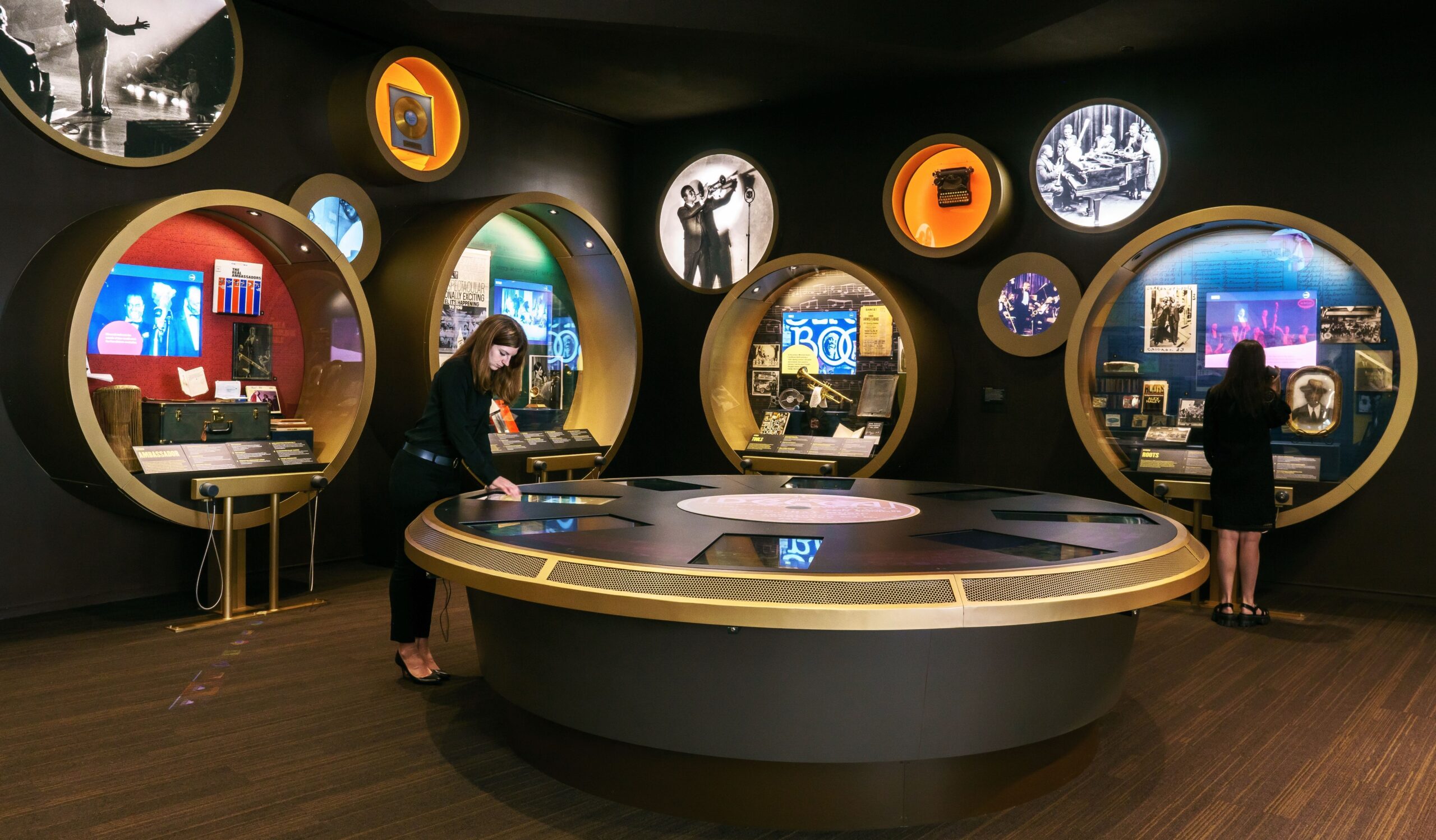
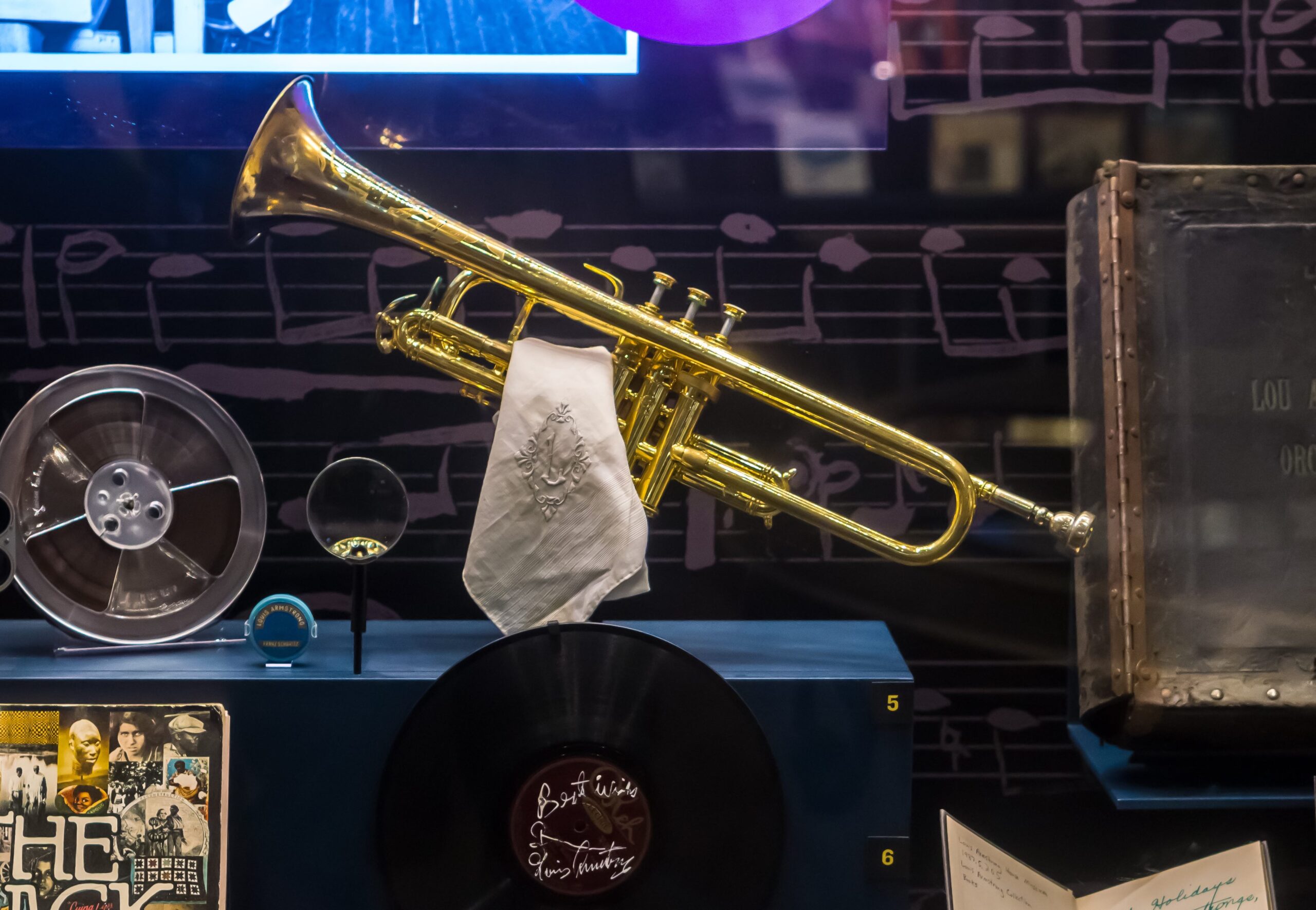
“The gallery display (by C&G Partners) is full of circular motifs, reminiscent of musical notes or records.” – The New York Times
Golden circular forms fill the exhibition, inspired by the ends of Armstrong’s famous gold cornet, the logo of the Louis Armstrong House Museum (by Milton Glaser) and the records and reel-to-reel tapes that fill the archives located in the Center. Media accompanies every exhibition element, and plays in circular forms overhead, in celebration of the impact of a musician who appeared in every new medium as it was invented: records, radio, movies and television.
Though he was a trumpeter, Armstrong pushed the Beatles off the #1 spot on the Hot 100 when he was 62 with his singing of “Hello Dolly”. He was also the first to record scat singing. In the exhibition, his gold trumpet takes the spotlight, with his monogrammed handkerchief.
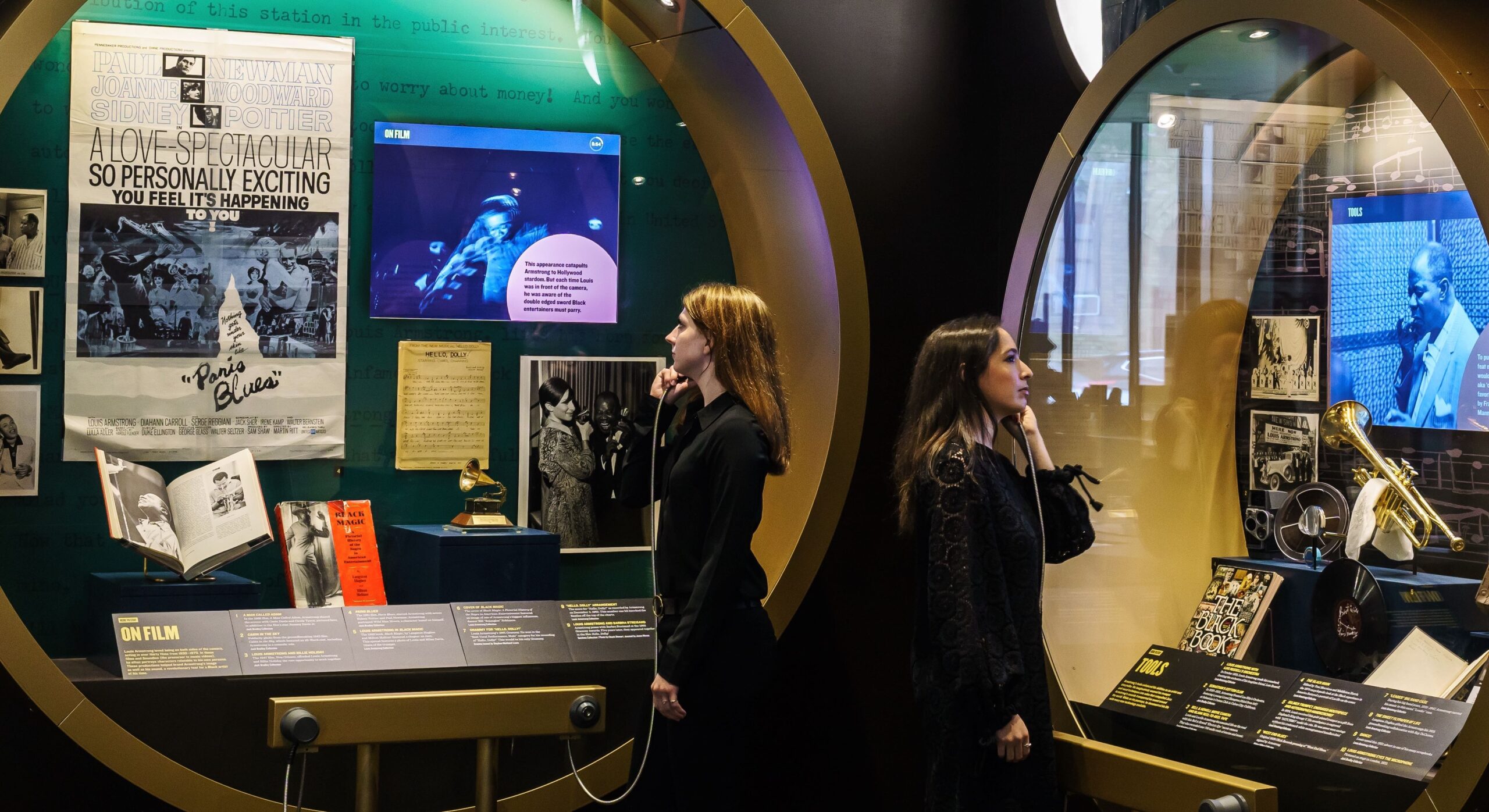
Music plays throughout the exhibitions, on individual high-fidelity handsets, so that visitors can listen to Armstrong’s voice and music as they learn about the man and his legacy.
The Center building was designed by Caples Jefferson, and the exhibitions were fabricated and installed by Art Guild.
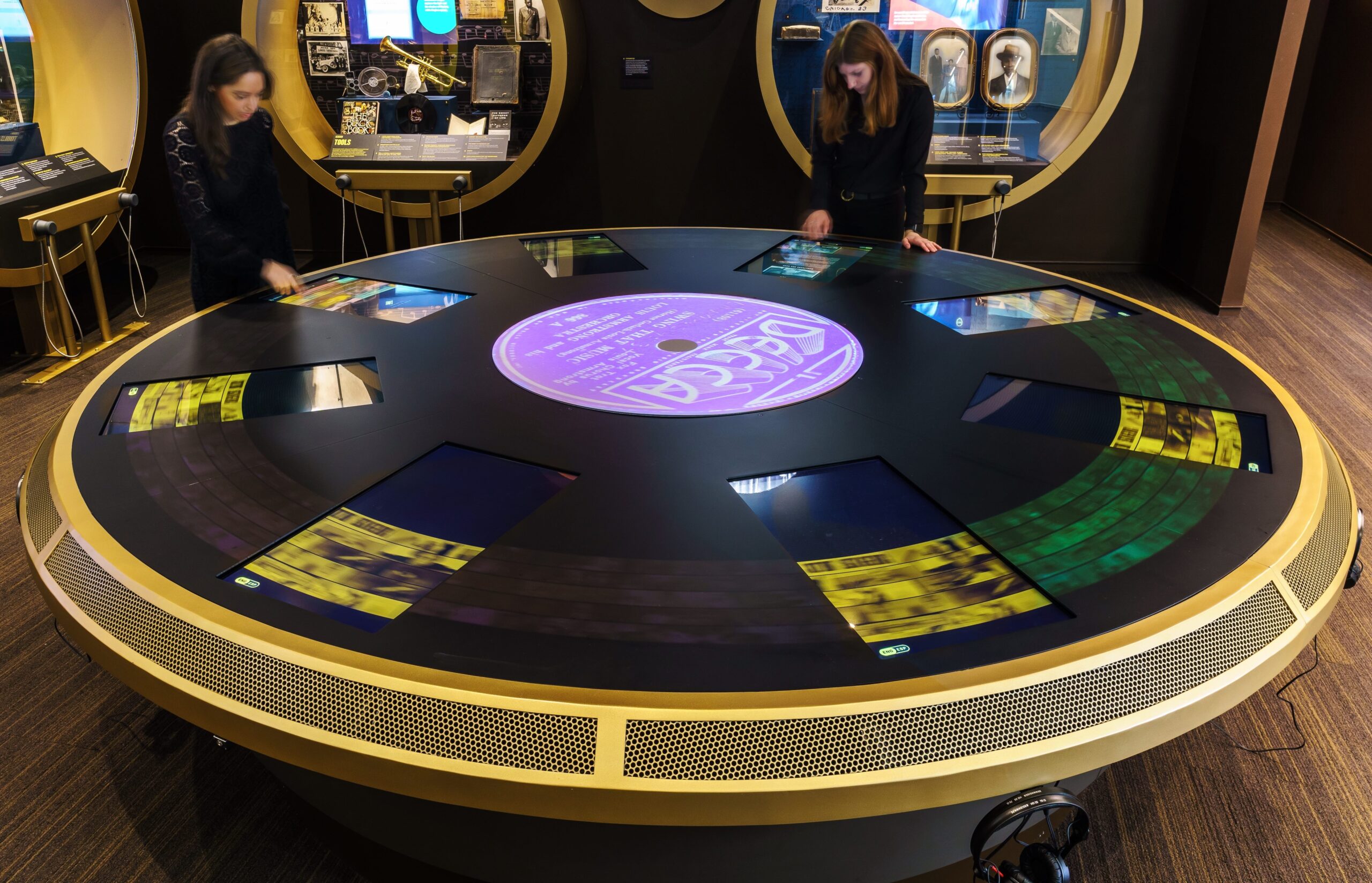
A centerpiece of the experience is a giant interactive surface evocative of a spinning vinyl record. Projections from overhead create ever-changing motion of a spinning center labels and grooves turning around the perimeter. Media technology design for the table is by Potion.
“Since it opened on July 6, the Center has exceeded visitor estimates and is adding more hours and drawing fans from across the country.” – The New York Times
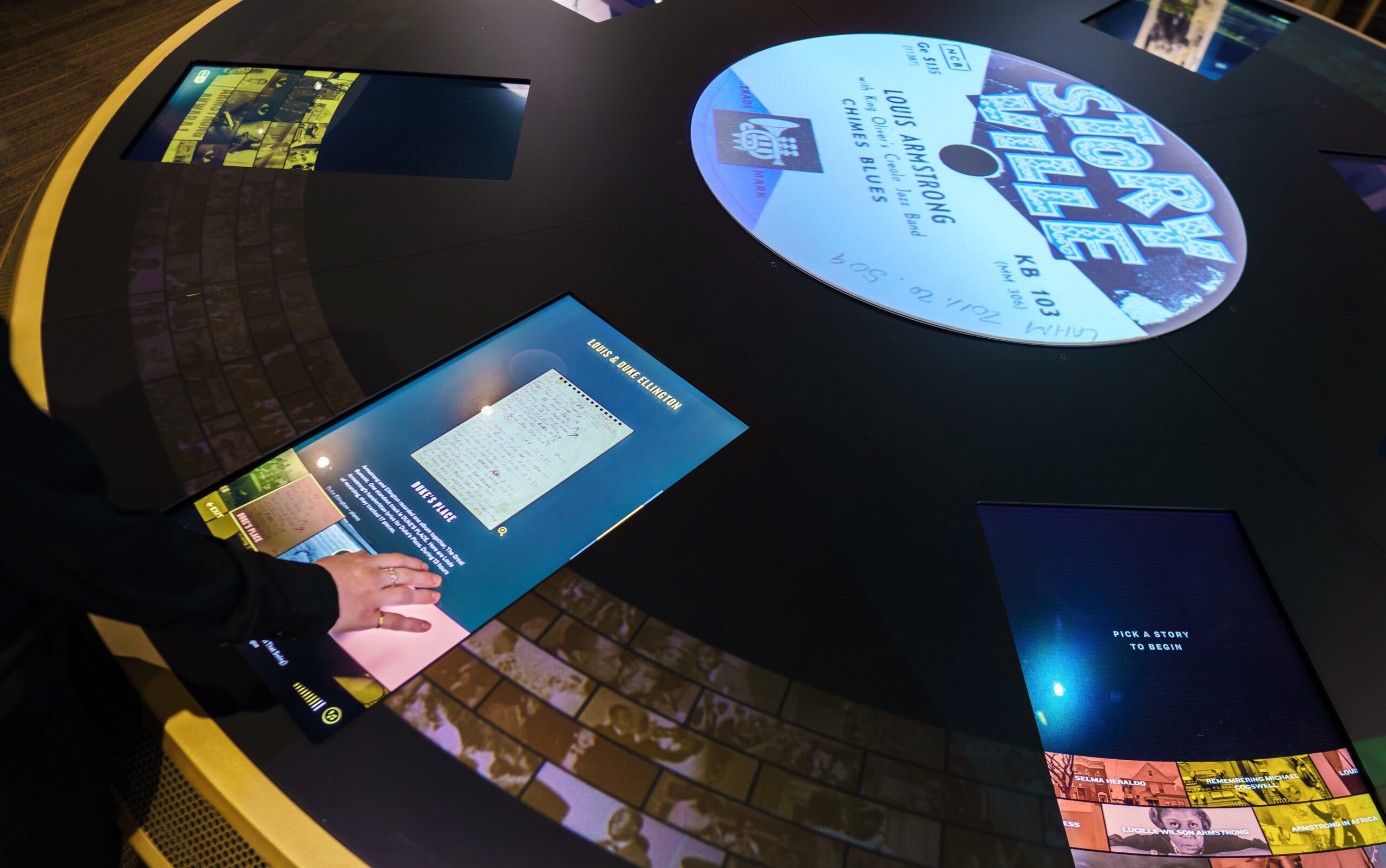
Inset high-resolution touchscreens allow visitors to pick from different story “tracks” about Louis, his music and his times. High-fidelity headsets surround the table to give visitors the best audio possible.
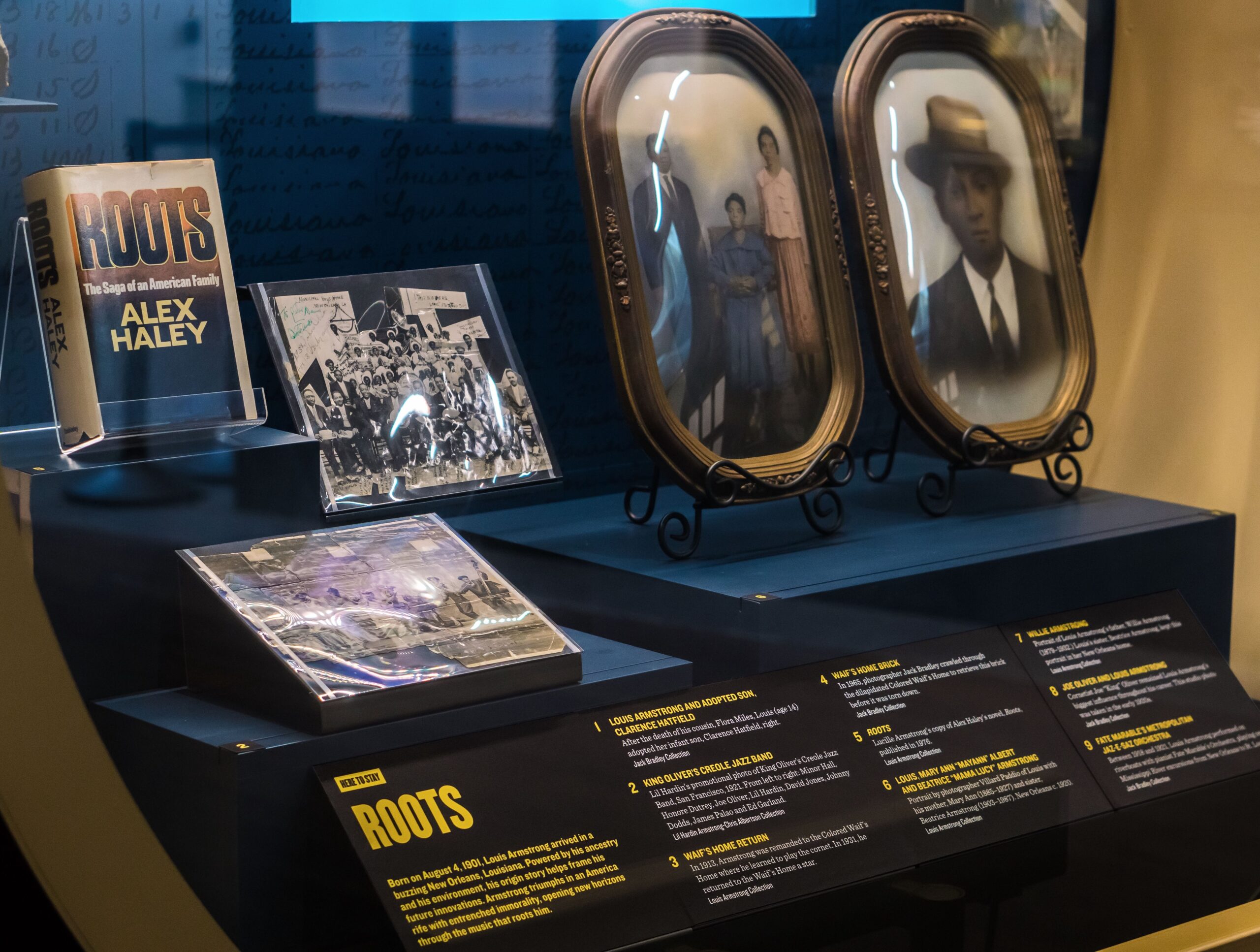
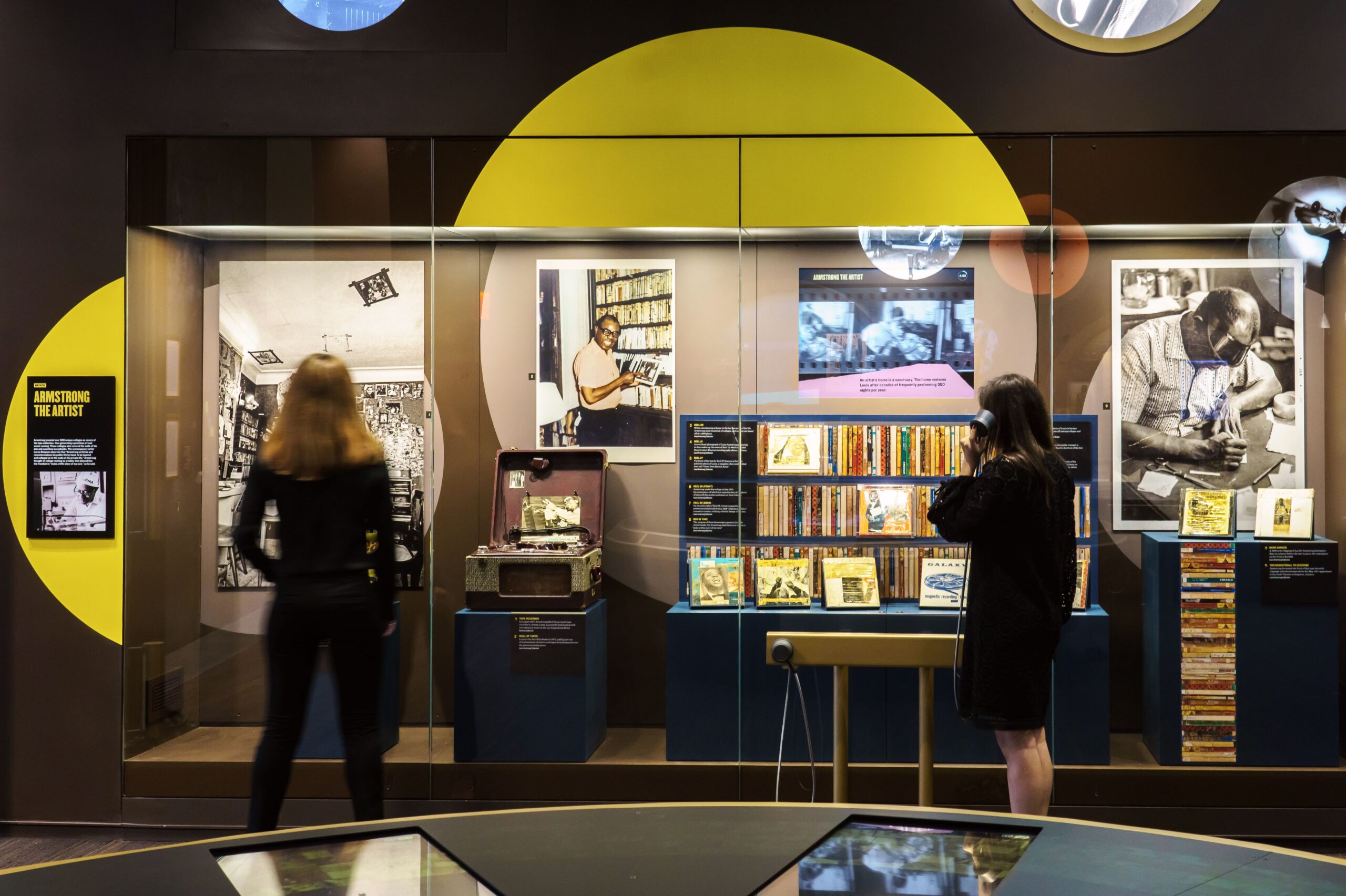
A set of easily updated changing gallery cases, also with media and music, display the little-known story of the reel-to-reel tape boxes Louis was fond of decorating. Many of the boxes are covered with eye-catching and colorful collage art done by Louis himself, and recently restored.
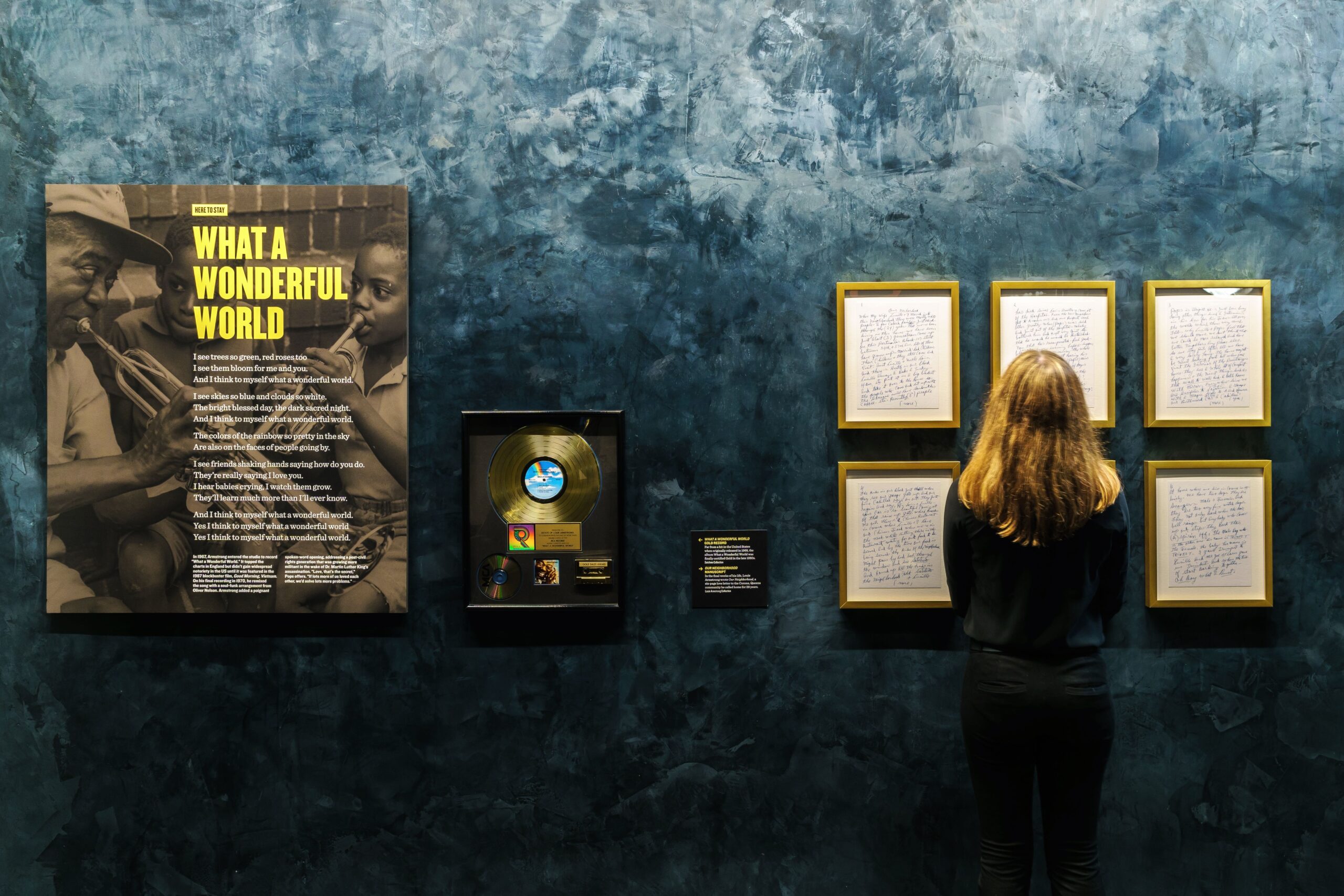
Louis was a fixture of his neighborhood in Corona, Queens. In his famous hit “What a Wonderful World” the lyrics refer to the children he watched grow up:
I hear babies cryI watch them growThey’ll learn much moreThan I’ll ever knowAnd I think to myselfWhat a wonderful worldYes, I think to myselfWhat a wonderful world
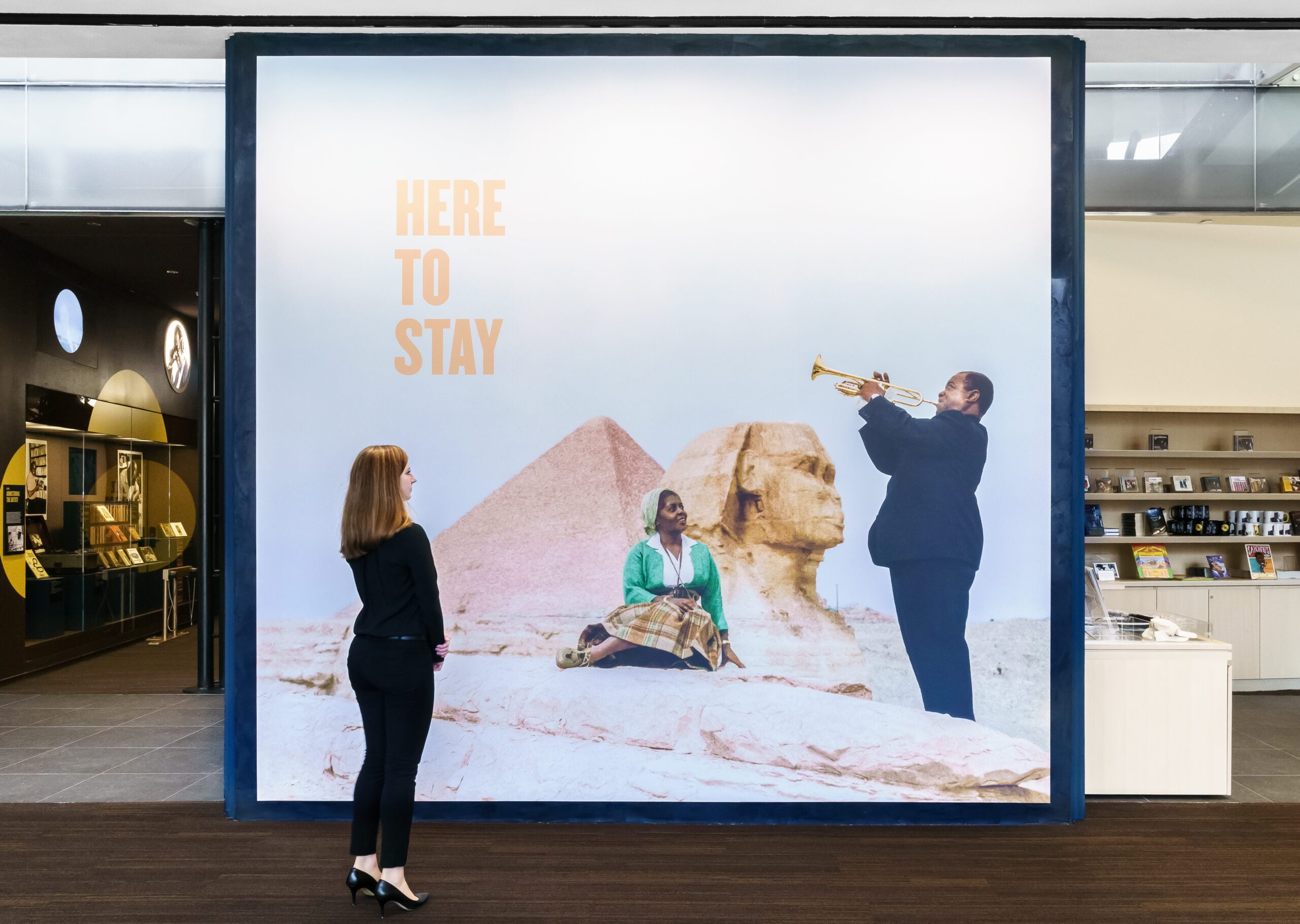
The Louis Armstrong Center is the first stop for visitors, and includes the exhibition, a jazz club, a 60,000-item archive, and gift shop. And there is the Louis Armstrong House Museum directly across the street, which visitors get to walk through after starting at the Center. Both are gems of NYC culture.
![C&G Partners [logo]](https://www.cgpartnersllc.com/wp-content/uploads/2022/07/CGP_Logo-black.png)